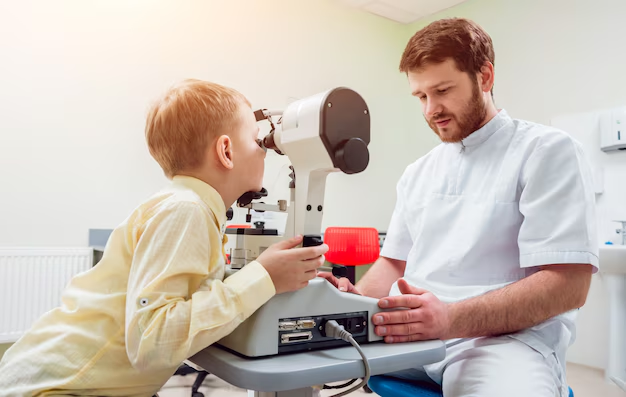
Squint, also known as strabismus, is a vision condition characterized by misalignment of the eyes. When someone has a squint, one eye may turn inwards, outwards, upwards, or downwards, while the other eye remains straight. Here's an overview of squint:
- Types of Squint:
- Esotropia: One eye turns inward towards the nose.
- Exotropia: One eye turns outward away from the nose.
- Hypertropia: One eye turns upward.
- Hypotropia: One eye turns downward.
- Causes:
- Muscular Imbalance: Squint often occurs due to an imbalance in the muscles that control eye movement, causing one eye to be misaligned.
- Amblyopia (Lazy Eye): Sometimes, squint can develop as a result of amblyopia, a condition where one eye has significantly reduced vision. The brain may suppress input from the weaker eye, leading to misalignment.
- Refractive Errors: Uncorrected refractive errors such as nearsightedness, farsightedness, or astigmatism can contribute to the development of squint, especially in children.
- Genetic Factors: Squint can run in families, suggesting a genetic predisposition.
- Symptoms:
- Visible misalignment of the eyes.
- Double vision (especially in adults).
- Eye strain or discomfort.
- Headaches.
- Reduced depth perception.
- Squinting or closing one eye to see better.
- Diagnosis:
- A comprehensive eye examination by an eye care professional, including assessment of eye alignment, visual acuity, refractive error, and evaluation for any associated conditions such as amblyopia.
- Specialized tests such as cover-uncover test, alternate cover test, and prism cover test may be performed to determine the type and severity of squint.
- Treatment:
- Glasses: If the squint is associated with refractive errors, wearing corrective glasses may help align the eyes.
- Eye Patching: In cases of amblyopia, patching the stronger eye to encourage the use and improvement of vision in the weaker eye may be recommended.
- Orthoptic Exercises: Eye exercises designed to strengthen eye muscles and improve coordination may be prescribed, especially in cases of intermittent squint.
- Botulinum Toxin Injections: In some cases, botulinum toxin injections may be used to weaken specific eye muscles temporarily, helping to align the eyes.
- Surgery: Surgical correction of squint may be considered to adjust the position of eye muscles and improve eye alignment, especially if other treatments are ineffective or if the squint is causing significant functional or cosmetic concerns.
Early detection and treatment of squint are important, especially in children, to prevent complications such as amblyopia and to improve the long-term prognosis for vision and eye alignment. If you or your child is experiencing symptoms of squint, it's essential to consult an eye care professional for evaluation and appropriate management.
Copyright @ NARAIN EYE CARE